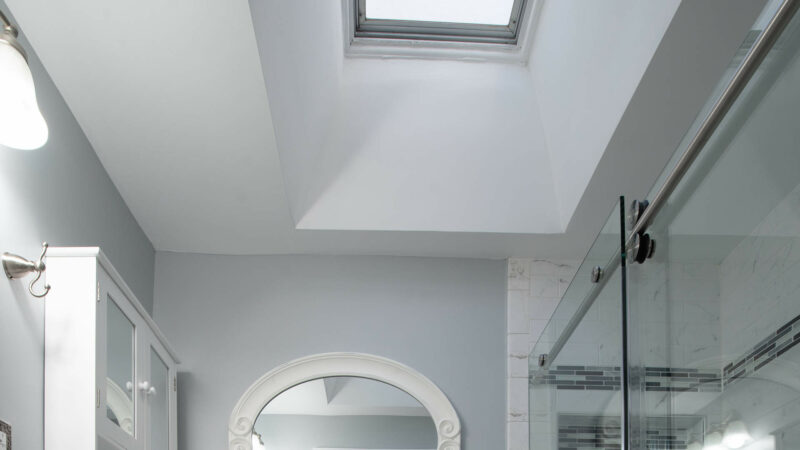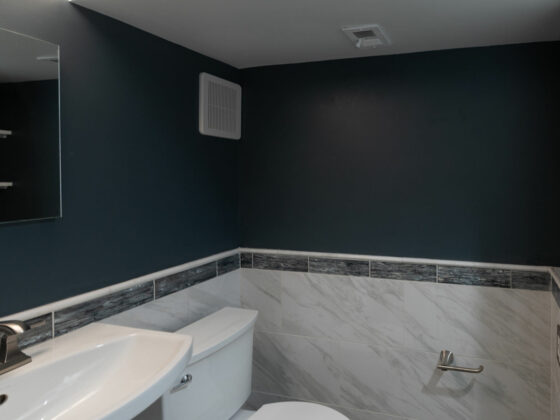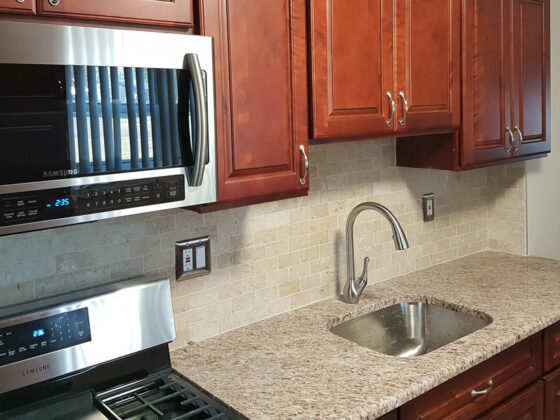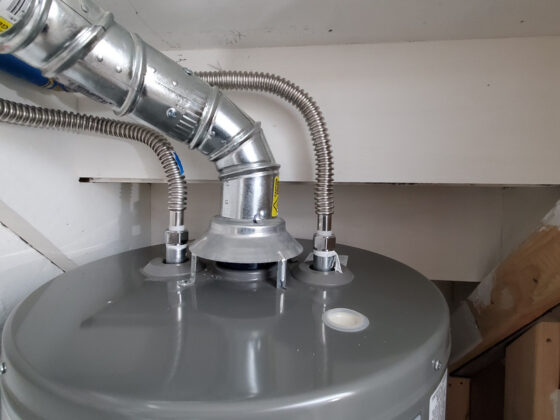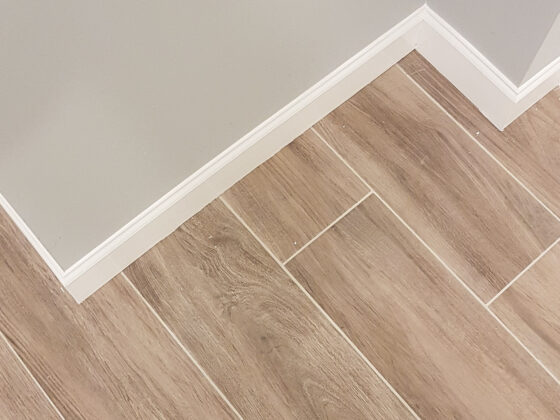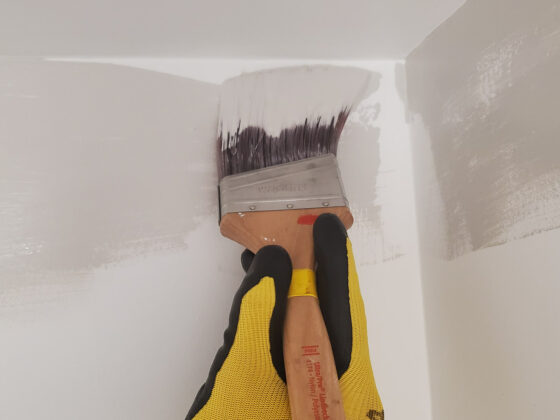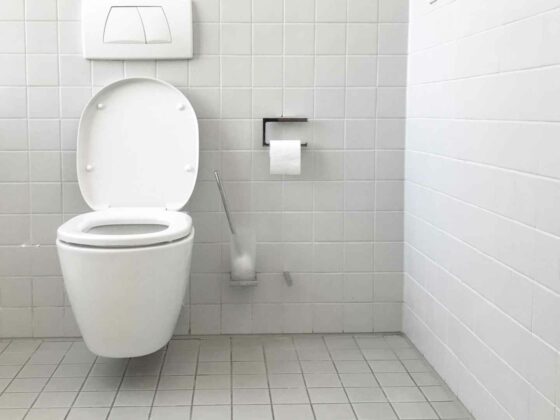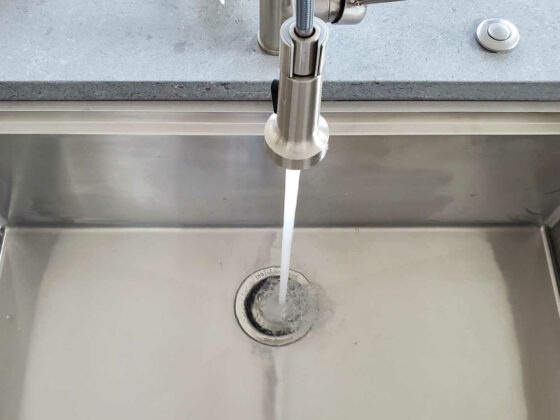Painting bathrooms in your home can be quite rewarding. There is a lot of hard work involved for sure but there is something about adding your visual flair to the bathrooms that makes it so satisfying. However, there is a right way and many wrong ways to go about painting a baths especially when it’s a bathroom ceiling.
What should you know before you start painting the bathroom ceiling? Painting the ceiling in the bathroom is a simple task. The most important thing is to properly prepare it for painting, and then use a good ceiling paint.
It’s almost impossible to state in a few lines about everything it takes to paint a bathroom ceiling efficiently and properly. Here we will take a deep dive into the various factors you need to know about when it comes to painting your bathroom ceiling like a pro.
What Is the best paint to use on a bathroom ceiling?
There are two types of paint that people generally go for when it comes to painting interiors. They are oil and latex paint. When it comes to painting bathrooms, you should ideally go in for water-based latex paint. This is not to say that oil paint is inferior by any means as it is well known for being durable to take on a lot of scrubbing. However, on the downside, this paint requires mineral spirits for cleaning, releases VOCs and takes time to dry between coats. For painting a bathroom ceiling, you need to go for flat, satin or a egg-shell paint finish.
Satin or eggshell paints have great moisture resistance and are more durable. Do note that you need to choose a water-based latex paint and not any other type. They also dry a lot faster between two coats, which means you don’t have to wait for a long time to finish the job. For bathrooms with half baths and a low moisture and humidity environment, you should opt for a flat or satin finish.
On the other hand, if you have a shower and prefer steamy hot water when taking a bath, then you must go in for egg-shell or semi-gloss paint. This is because a semi-gloss finish can prevent mildew and mold from forming and provides excellent protection against moisture. This paint comes with a firm molecular structure that prevents water from seeping through. If you do have mildew on the ceiling, never paint over it. Instead, ensure that you remove the mildew fully before applying any paint.
If you need more information on this topic, I recommend the article: “What Kind of Paint is Best for the Bathroom“
How do you prepare a bathroom ceiling for painting?
There are many different things you need to do to prepare a bathroom ceiling for painting. Here are some of the most important ones.
- Remove fixtures and fix issues – You need to then remove any fixtures on the ceiling such as lights or heat lamps. Once that is done, you need to scrape off any flaking paint with the help of a putty knife. If there are any holes in your ceiling, then you can patch them with a hand sander and then re-sand the holes to get a clean and even surface.
- Wash the ceiling if necessary – Wash the ceiling to remove dust, dirt and stains. In most cases, this will be a fairly simple job but if you have stains on the ceiling from mold or smoke, then you need to make a sugar-soap solution and clean the area by using a cloth dipped in it. Once the area is fairy clean, wipe the area again with a dry cloth to remove any moisture. You might also want to apply a coat of stain blocker at this stage to prevent stains from appearing again. If the ceiling was in such a condition that you had to wash it, always use the primer on the first coat.
- Priming the ceiling – This is not required if you don’t have a lot of stains on your ceiling as bathroom ceiling paint is a mixture of paint and primer. However, if you have a lot of stains on the ceiling, then you can apply a single coat of primer that is compatible with the type of paint you are planning to use.
Now your ceiling is prepped and ready for paint. No matter what paint you choose, do see if it has anti-mold properties as it will greatly help you in the future.
What is the easiest way to paint a ceiling?
The easiest way to paint a ceiling is with a roller. This doesn’t mean that you should just pick one up and start painting. First, you need to cut in so that you can apply the paint properly. Start by carefully painting the edge of the ceiling with a brush section by section, then swap to your roller and paint the entire ceiling
When you start rolling, always remember to do it in both directions and removing excess paint from the ceiling. To get a smooth and consistent coat of paint on the ceiling, you need to quickly move from one section to another so that the paint along the edges remains wet. All you have to do is re-roll each section at a right angle to the direction you went for first. Also, try to get as close as you can to the edge of ceiling when using the roller. The longer you extend the pole, the less control you will have.
How to fix peeling paint on a bathroom ceiling?
Scrape, spackle and paint! That’s the most concise explanation on how to fix peeling paint on a ceiling. Here are some of the tools you will need before you start it.
- Paint scraper
- Putty knife
- Goggles and a dust mask
- Fine-grain sand sponge
- Primer or paint
- Spackle / Joint compound
Once you have all the tools, make sure the ceiling is dry. So it would be wise not to use the shower for at least 24 hours before the painting task. When you start working on the ceiling, use your putty knife to remove the peeling paint but make sure you wear your goggles and dust mask when doing so. Once they are removed, sand the area and remove any remaining dust. This leaves your ceiling surface uneven. Spackle it and make sure you let it dry fully. A full day of drying is recommended for best results but it should be dry after six hours. Once it is fully dry, sand the area until it is fully smooth.
How do you paint mildew on a bathroom ceiling?
While you can always paint over mildew on the ceiling, it would be useless to do so as the problem will only return later. Instead, you need to first get rid of the mildew completely and apply a mold-resistant primer before applying any paint. Even if you are using mold-resistant paint, you still need to thoroughly clean the area and get rid of mildew before painting the ceiling.
Some of the best solutions for cleaning bathroom mold are vinegar, baking soda, borax and hydrogen peroxide. The best natural solution is to use vinegar without any water. It may smell bad but it is non-toxic and highly efficient at killing mold. Whatever you do, never mix vinegar with bleach as it produces a poisonous gas. Also, you can buy ready-made mold remover hemicals from DIY stores.
Before applying vinegar, cover the floor under the ceiling and other fixtures with plastic. Pour distilled vinegar into a spray bottle and apply it over the affected area. Let the area soak in the vinegar for a few hours. After this, you can scrub the area with a stiff bristle brush until all the mildew is gone. Make sure you wear a dust mask and goggles when you do this. Apply a mold-resistant primer to the ceiling before you paint it. You can also buy a ready-made mold killer in Homedepot or Lowe’s stores.
Can I just paint over a water stained ceiling?
No, you shouldn’t. Before painting over a stained ceiling, you should always fix the stain issue. If it’s due to mold, apply a coat of primer (stain blocker) before painting it. Otherwise, the stains will again appear after some time and you will have to spend more time and money to fix them. There are many different primers you can use to ensure that you don’t see the same problem recurring over time. All you have to do is go for one that is mold resistant and you won’t have to worry about a lot of hassles in the future. If you have a mold problem, do contact a specialist to remove it as it can be very dangerous in the long term.
Is there a waterproof paint for bathroom ceilings?
Paint for the bathroom needs to be durable against scrubbing and humidity, washable and must be mildew and moisture-resistant or waterproof. Therefore, the best type of paint for a bathroom ceiling is a semi-gloss finish which is theoretically water proof. However, semi-gloss paint has a lot of shine and is very reflective, what looks unattractive. Flat or eggshell paints on the other hand aren’t exactly waterproof but come with a lot of water resistance and look much better on the ceiling. Personally, if I paint a bathroom that is properly ventilated, I use a good quality flat paint.
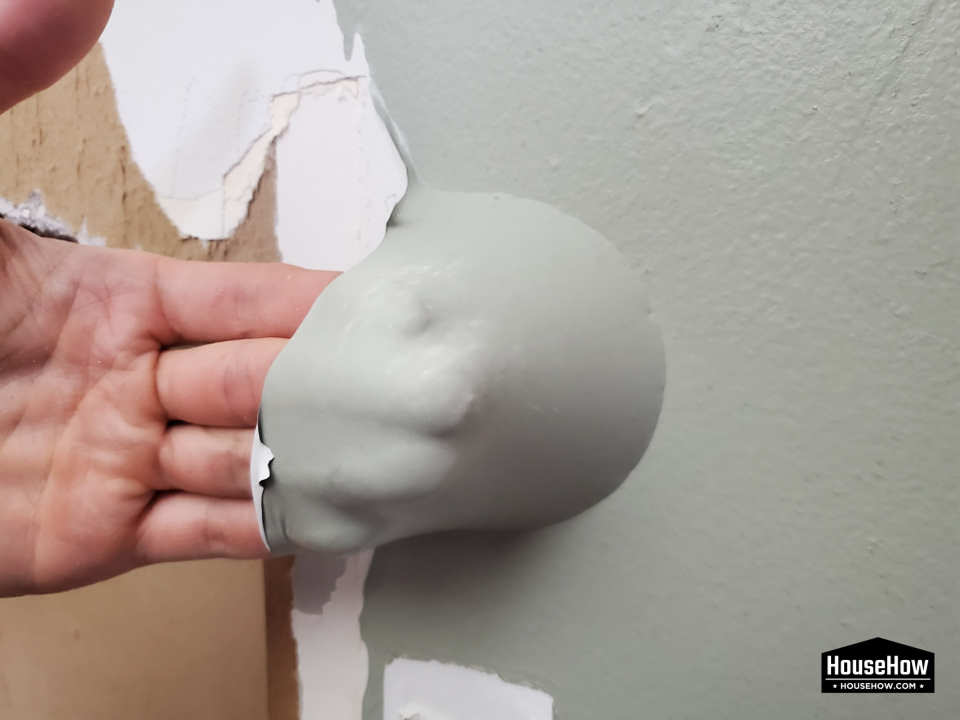
What color is best for bath ceiling?
Painting the ceiling in a brighter color will help to make the room seem larger than it is. So if you are choosing white for the walls or any light color, painting the ceiling with bright white color would be a great idea. When painting the walls, ideally you should aim for a ratio of 80 percent of white to 20 percent of the color you wish to use. This way, when you apply bright white to your ceiling, not only will it mesh well with the color scheme but it will also make the entire bathroom feel larger.
Should I paint my bathroom ceiling white?
Ideally yes, you might want to go for the classic white paint for your bathroom ceiling. Choosing other colors might make the bathroom seem very dark and maybe even a little bit depressing. Cool whites can create a very clean look for your bathroom whereas warm whites will help to get a warmer look. You can even complement it with dark accent colors such as blue to create a more contemporary feel. Light colors help in reflecting light and ensuring that the room doesn’t look too grim. Generally white color looks best with bathrooms that have a streamlined architecture whereas other tones look better in more traditional bathrooms with moldings and ornamental fixtures.
In short, you might want to go for white for your ceiling if:
- You want to have a bright color on the bathroom walls.
- You want to make the bathroom seem bigger than it is.
- You want to mask any irregularities on the ceiling like lumps or smoke stains.
- You want to make the bathroom feel bright.
Do you paint the ceiling first or last?
No matter what room it is, you always paint the ceiling first and only, then the walls. There are a couple of reasons for this:
- Set the tone – Painting the ceiling first will give you a great idea of how the overall room will look. Color plays an important role in making space feel bigger or smaller. So if you paint a light tone on the ceiling or white, then you will instantly see the room looking a lot bigger than it actually is. If you paint it in a darker color, the opposite effect will be there.
- Prevents mess – If you paint the ceiling at the end, then paint might trickle down or splash down on the walls. Then you will have to again repaint the walls which will cost you more money, time and effort. By painting the ceiling first, you can prevent such hassles from occurring.
What is the best primer for the ceiling?
There are several great primers out there that will do wonders for your ceilings such as KILZ Kitchen and Bath Interior Latex Primer/Sealer, Zinsser Water Tite Waterproofing Primer, Rust-Oleum Mold Killing Primer and others. Each one comes with special abilities, advantages and disadvantages. There never will be a single ideal primer that will work great for all ceilings. You need to pick the right one that will meet your specific or unique needs.
The KILZ one mentioned above, for instance, is great for blocking stains, produces very few VOCs and is mildew resistant. The Rust-Oleum one is great at killing mold, bacteria and has great adhesive properties. So if you have any special requirements such as the need to prevent mold or mildew or if you need a primer that comes in multiple finishes, you need to get one that will meet those specific needs.
Related questions
Do you need special paint for bathroom ceilings?
No, you don’t but you do need to go for one that has optimal moisture resistance and can withstand humidity. Otherwise, you will see the paint flaking and chipping off over time. Egg Shell paints are usually preferred when it comes to painting bathroom ceilings as they are durable, washable and resistant to mildew. Ceilings especially are more prone to mildew than walls because they are hardly scrubbed down and cleaned regularly. Flat and Matte paints are the best again if we want the ceiling to look good.
What kind of paint do you use on a shower ceiling?
There are three types of paints that are efficient for shower ceilings and they are egg-shell and semi-gloss, waterproof and antifungal paints. Egg-shell and semi-gloss shine paints come in a wide variety of colors, are moisture-resistant and are very durable too. Waterproof paints can keep water from seeping in and allows you to clean the surface more efficiently and conveniently. The antifungal ones help to prevent mold from appearing and will also be worth it when painting an area that is often wet and damp.
What paint to use on the bathroom ceiling to prevent mold?
Priming the ceiling with Kilz is a great way to prevent mold from appearing. All of their products are of high quality and highly efficient when it comes to durability and longevity. The Kilz Mold & Mildew primer is perfect for bathroom ceilings that have mold and mildew. It is specially designed for high humidity and moisture-ridden surfaces and provides excellent adhesion for paints. It can also prevent various types of stains ranging from markers, grease, ink, tannin and water stains from ruining your surfaces.
Do I need to prime the bathroom ceiling?
Most bathroom ceiling paints are a mixture of paint and primer so in most cases you won’t have to prime the ceiling before painting. However, if your ceiling is filled with stains, you should apply a coat of primer first before applying paint. The Killz mold & mildew interior/exterior primer is an excellent choice for this as it is very effective against mold formation and will save you a lot of hassles and money in the long term. Do remember to remove the stains as much as possible before applying the primer though.
What is the best Sherwin Williams ceiling paint?
There is no “best” paint in any category as it will mostly depend on the situation you need it for. This is not to say that there are no bad paints of course but there are numerous amazing paints from Sherwin Williams. One of the best performing Sherwin Williams ceiling paint is the ProMar Interior Latex Ceiling Paint as it is not only affordable but very effective as well in terms of the final finish it offers. It provides a super flat finish that can greatly minimize imperfections on the ceilings and come with self-priming properties and great adhesiveness.
What is the best Behr ceiling paint?
Behr’s best ceiling paint for the bathroom is Ultra Pure White Ceiling Flat Interior Paint. Although it is a paint specifically made for bathrooms, it works very well in this application.
What is the best Benjamin Moore ceiling paint?
Benjamin Moore’s best ceiling paint for a bathroom is Aura Bath And Spa Paint. This paint is really high quality and it is probably the best paint on the market. Unfortunately, this paint is quite expensive.
Is it better to paint a ceiling with a brush or a roller?
The best way to paint a ceiling is with a roller. To do it efficiently, you need to work section by section to ensure that the edges are wet for a consistent finish. A roller helps to relax your arms more as well, especially when it comes to painting a ceiling. With extendable bases, you can either paint at an arm’s length or three or four feet away. The further away you are, the less control you will have, however. So always aim for a length that gives you enough control but also makes you more comfortable.
Should ceiling paint match walls?
No, it doesn’t have to. You can, but in most cases, it won’t look good. Ideally, you should always paint the ceiling in a brighter color than the walls to make the ceiling look taller. This is not to say that some colors can never look good on the walls and the ceiling though. The color that will look best in a room will depend on various factors such as the type of furnishings kept, the amount of natural light there is and the amount of space. Dark colors make rooms feel smaller whereas bright colors make them feel bigger.
How many coats of paint does a ceiling need?
In most cases, you will need at least two coats of paint to ensure that the final product will look smooth and consistent throughout the space. A lot of people go for a single coating to save money but then in the long term end up spending more because a single coat will seldom be enough. There are exceptions though but those paints will be incredibly expensive. When it comes to your ceiling, always go for high-quality paints and ones that come with special properties like blocking stains and preventing mold.
What ceiling paint does Mike use?
Although I wrote a lot that the best paints for the ceiling are the glossy ones, I often use flat paint on the ceiling, namely Behr Ultra Pure White Ceiling Flat Interior Paint. Why? Because ceilings often have a lot of imperfections and such paints mask them perfectly, and the end result is always the best. In a well-ventilated bathroom, such a paint will work great for many years.
Related community topics
If you have any other questions that are not answered in this article, you can ask them on our Home Improvement Community Forum by clicking on this link

